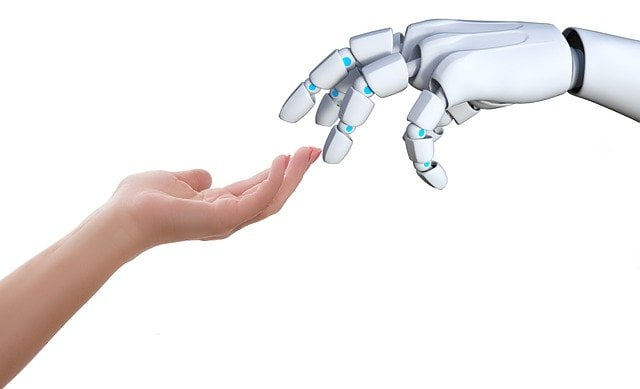While AI and robotic automation technology are crucial to business efficiency, it’s also important to remember that humans must interact with those technologies. Implementing a tool like robotic process automation (RPA), for example, isn’t about replacing humans. It’s more about augmenting them.
What is RPA technology?
Robotic process automation (RPA) is a valuable tool that businesses can implement into the operational process.
RPA is software that allows businesses to assign robots to basic business functions. From completing mundane tasks to filling in spreadsheet data, RPA can relieve your workers of time-consuming and simple tasks and allow them to focus on more valuable business priorities.
RPA software is designed to respond to basic commands. It can only work when triggered, and can only fulfill predefined tasks, like retrieving customer profiles, filling multiple order form information, and retrieving data forms.
RPA won’t replace human workers
In general, RPA is cost-effective, quick, and able to minimize human errors when completing basic, predefined tasks. These benefits sound almost too good to be true, and some businesses may think that human workers won’t be needed after the software has been implemented.
RPA technology is not about removing humans from all levels of the workplace. Instead, this software can elevate the human worker skill set. A company won’t need to employ a worker to fill in data. Instead, the company can train the employee to configure the robotic software to work for them and then analyze the data and report the findings with creative, actionable insights.
RPA is designed to underpin employees rather than replace their contributions. With the support of this technology, employees can begin to solve critical business problems and provide improved experiences, products, or services for customers.
Four ways humans benefit from RPA
How RPA will be implemented in your business will depend on your unique needs. However, you need to start experimenting with the software to realize its total value as a technology.
Here are four ways that humans might benefit from robotic software:
#1. On-screen RPA bots to improve compliance
Since RPA bots are computer-coded and based on rules, they can easily trigger a response based on certain compliance protocols. A bot that is knowledgeable about compliance can improve real-time interactions, inform data sets, create reports, and improve the quality of internal processes.
While compliance can still happen without automation bots, it is a bit harder. Humans must either know the compliance regulations or repeatedly refer to the compliance documents. Human error can, of course, occur, making human-based compliance less efficient, more time-consuming, and costly.
An RPA robot can quickly check a predefined compliance measure in a fraction of the time and for a fraction of the price.
#2. Freeing up humans to focus on more productive tasks
There are many ‘basic’ tasks that businesses need to complete to make sure that programs, services, and products function correctly. However, sometimes the basic tasks can take up a lot of time. And, in reality, higher-level critical thinking may be needed on another task.
RPA robots can work on these basic tasks so long as the tasks are predefined. For example, if a school has a clear list of eligible students for a class, use the RPA software to easily process students, even if there is a high volume of incoming students. All the software would need to know is what the dataset means. Then, employ human skills to develop pathways for student success within your program.
#3. Simplified data handling and analysis
So many aspects of the business world function on data aggregation. This is a major issue in information-intensive industries, such as banking, healthcare, insurance, governmental agencies, and the up-and-coming blockchain industry.
Implementing RPA functionality into any of these industries will allow all of the structured data these businesses collect to be neatly organized and quickly processed. It also virtually eliminates data compliance concerns rampant in each of these sectors.
Since an RPA software could theoretically be the only thing interacting with personally identifiable information (PCI), it could code that information so that employees can analyze it but never come into contact with sensitive customer details.
#4. More positive customer experiences
Having a poor customer effort score or poor customer service can be extremely detrimental to a business. It can even turn away long-term customers.
RPA is extremely useful in customer service interactions because it can pull structured customer data for faster customer experiences. Consider implementing an RPA tool so that customer service representatives can quickly understand the customer’s history and the context of their issue.
How RPA can transform your business
As one of the many automation tools a company can have in its arsenal, RPA completes tasks more efficiently, with cost savings and fewer errors. But businesses should recognize that RPA will not be replacing their human workers. Humans are still needed to interpret the data and configure the automation tools to fit the company’s needs.
RPA software is robust and can drastically transform any business. It can be used for organizing data-heavy organizations and setting up web automation systems where APIs were not possible. Police departments have used RPA in handling large amounts of data and in refining time-consuming processes.
RPA should be introduced as part of your digital solutions toolkit because it improves business operations and complements humans.


